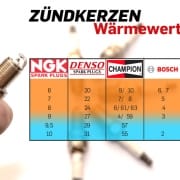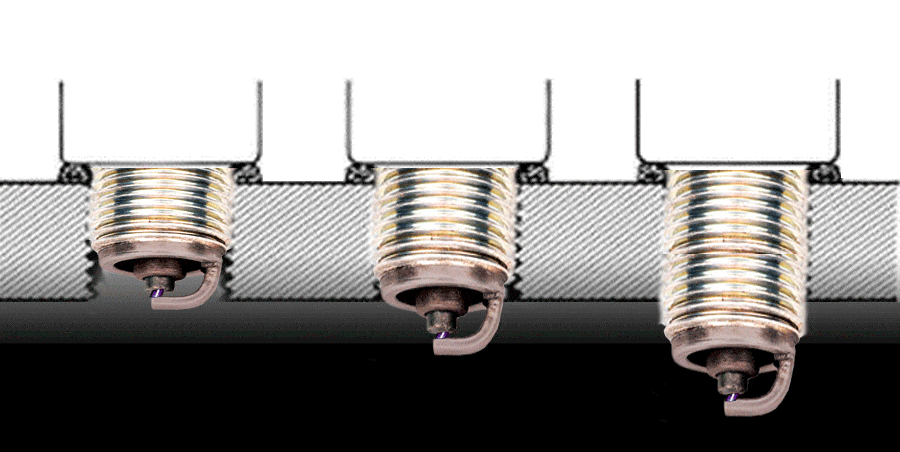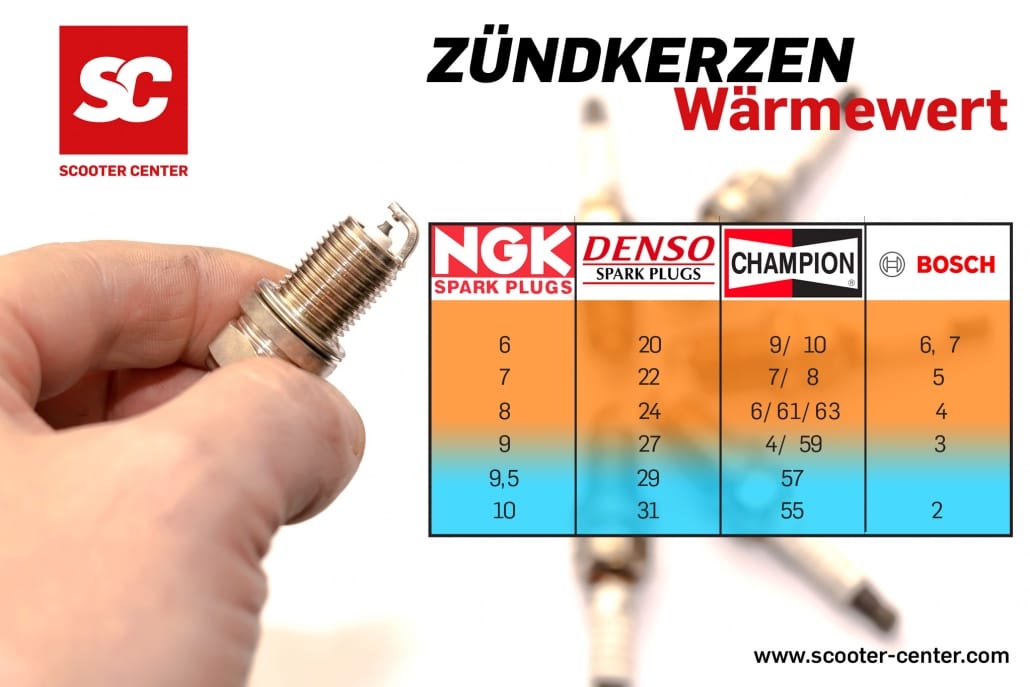Spark plugs for Lambretta, Vespa & others scooters
My personal spark plug universe is quite small and simple:
- Original engines: BOSCH W5CC
- Light tuning: BOSCH W4CC
- Ambitious tuning: BOSCH W3CC
- and sometimes even: BOSCH W2CC
That's the way it has always been for me and unfortunately it can't stay that way, because for quite some time now my universe has been crumbling! BOSCH - spark plugs are not existing anymore for a while. Exception: We could still secure a large stock of BOSCH W3CC. But no reason for me to have the world collapsing, as of course there are alternatives. But they are called differently and the smaller value is warm instead of cold ... Reason enough to take on the subject of spark plugs. In our Scooter Center shop you get sparkplugs from all leading manufacturers. 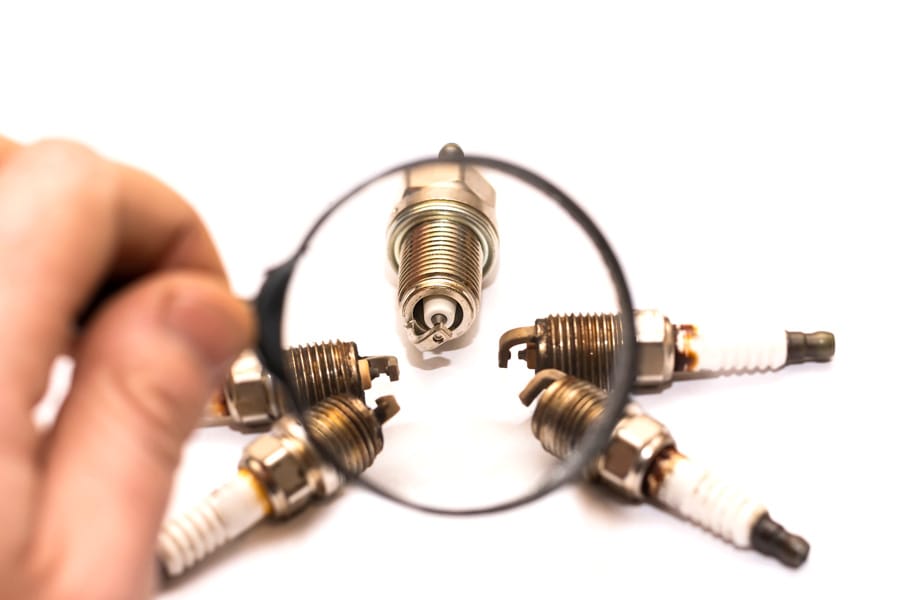
Spark plugs thread
Spark plugs are screwed into the spark plug thread of the cylinder head. And they are available in various diameters and lengths. The most common threads are M10, M12 and M14. Classic Vespa and Lambretta sizes are M14 thread. Modern engines, four-stroke and newer two-stroke engines with fuel injection use the smaller plugs with M10 or M12. The common thread lengths are 19mm (long thread) and 12.7mm (short thread). You should pay attention to the correct length of the spark plug and follow the manufacturer's or kit's supplier instructions. A spark plug that is too long can damage the piston as it protrudes too far into the combustion chamber, a spark plug that is too short will certainly have a loss of power if the engine starts at all. However, an unclean combustion would certainly cause residue to quickly form in the combustion chamber, which can cause engine damage or poor running.
Heat value
The heat value is decisive for the thermal fatigue strength of the spark plug and its self-cleaning effect. A distinction is therefore made between so-called cold and hot spark plugs. A cold spark plug is for engines that develop a very high combustion chamber temperature, usually engines that have a lot of power in relation to their capacity. A hot plug, on the other hand, is used in lightly loaded production engines. This type of plug quickly reaches a high temperature, which means that the soot on the plug burns off easily. The temperature resistance is achieved by differently designed insulators. A cold plug can give off a lot of temperature via the cylinder head, while a cold plug strongly inhibits exactly this. The heat rating has nothing to do with the strength or performance of a spark plug. A cold plug in a cold (weak) engine will oil or soot and can break without damaging the engine itself. A hot spark plug in a racing engine will burn up and damage it, usually severely. The heat value of a spark plug is not standardized. Each manufacturer has its own code here.
- NGK from cold to hot = 10-9-8-7-6
- Bosch from cold to hot = 2-3-4-5-6
- DENSO from cold to hot = 37-34-31-27-24-22-20-16-14
The material of the electrode
Copper, platinum, silver or even iridium are used here. Copper is the most common, followed by silver and platinum. Due to the high prices for the precious metals, the spark plugs are also correspondingly more expensive than their copper counterparts. The material is ultimately of interest almost only for wear, only the extremely thin iridium electrodes (Ø = 0.6mm) have a higher ignition voltage, the spread of the flame front in the combustion chamber is improved.
The ceramic plug!
The insulator head of the spark plug is made of ceramic. Clearly, one should not work here with brute force. Spark plugs should be handled carefully and better not be dropped, they should also be protected from moisture. Use a spark plug wrench with rubber inserts. 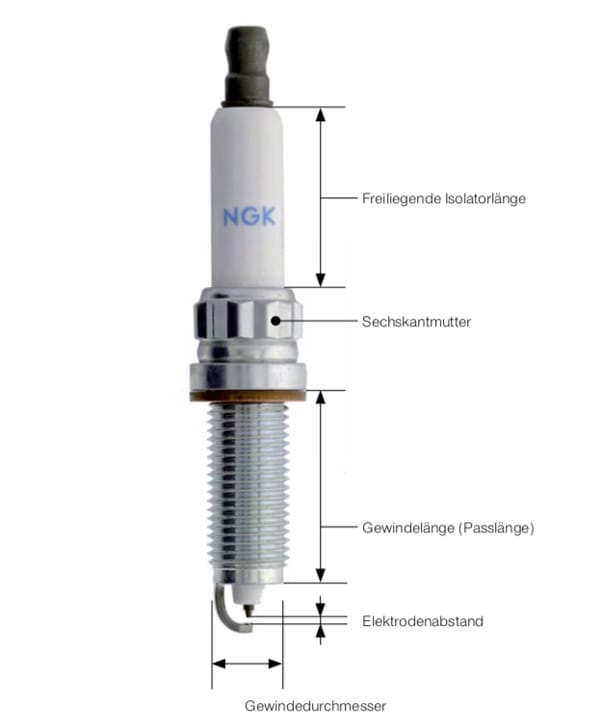
What is the tightening torque of a spark plug?
If it is set too low, there is a risk of compression losses and overheating. A fracture of the insulator or center electrode as a result of vibrations is also conceivable. If the torque is set too high, the spark plug may break off. The housing can also stretch or twist. The heat dissipation zones are disturbed, and there is a risk of overheating and fusion of the electrodes, or even engine damage. Manufacturers recommend a torque wrench for the Proper installation of a spark plug. Since we know that hardly anyone does this and it doesn't fit at all on the Lambretta, for example, you could follow the following rule of thumb: Hand-tight = tighten by hand and then tighten with the spark plug wrench another quarter to helped a turn. Our new bgm spark plug wrench: protects the spark plug and with magnet so that you do not burn your fingers when removing the plug. TIP: You can clean spark plugs with a fine wire brush after removal.
Spark plug image
You can also use a spark plug image to draw conclusions about the correct combustion of your engine. PERFECT: If the plug is “fawn”, your engine will burn perfectly. LEAN: If the candle is too bright - white, then it is too hot, possibly the carburetor is too lean or the ignition is set incorrectly. RICH: If you have a black, sooty spark plug, then the engine is running too well.
Spark plug connector
With a spark plug cap, you should pay attention to whether it is used with or without a spark plug nipple / SAE nut. A spark plug cap is also a part that is exposed to heat and vibration and should be checked regularly and replaced if necessary. Good spark plug cap Costs only a few euros, which is a good investment. TIP: I always have a second plug including an ignition cable in my tool.

